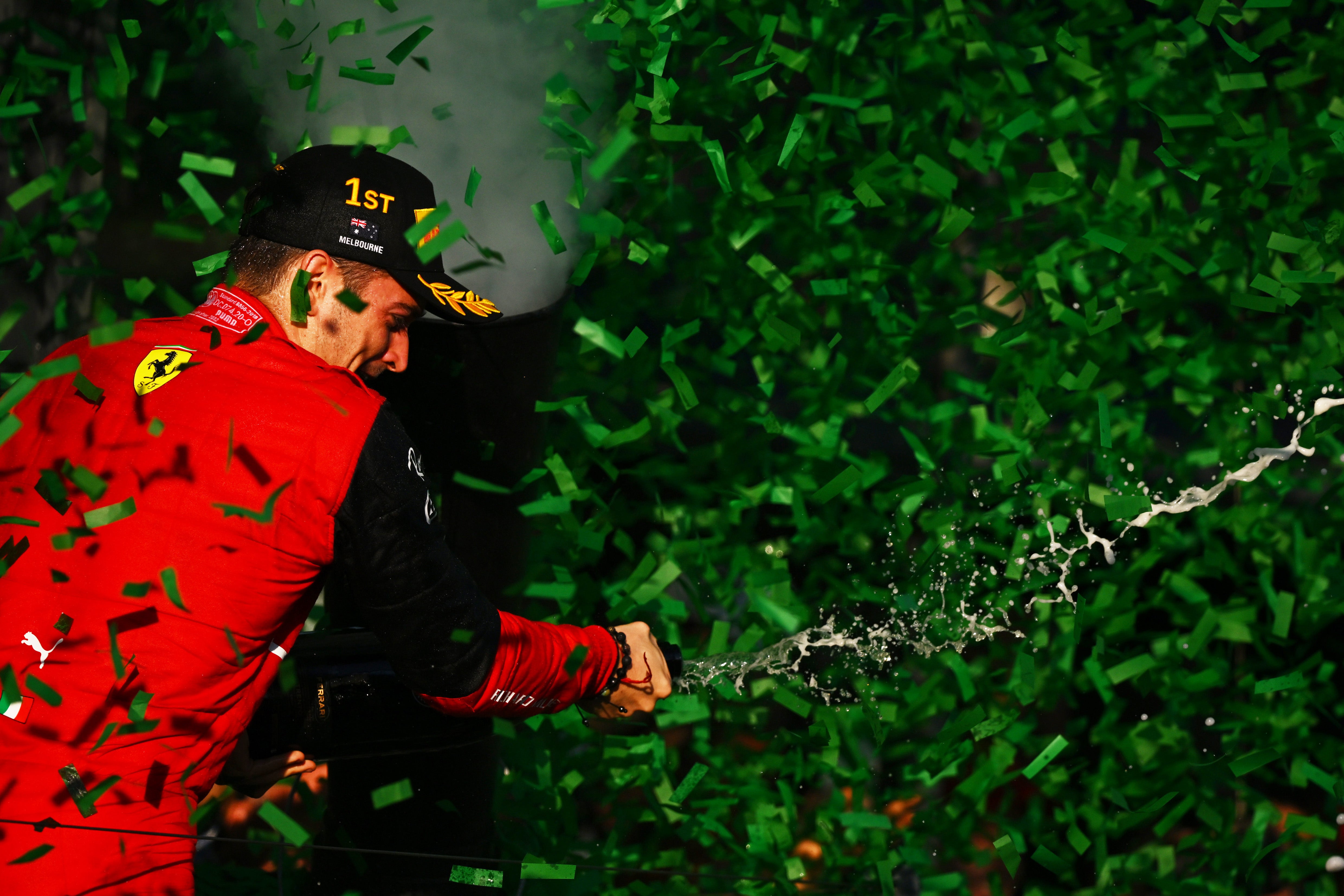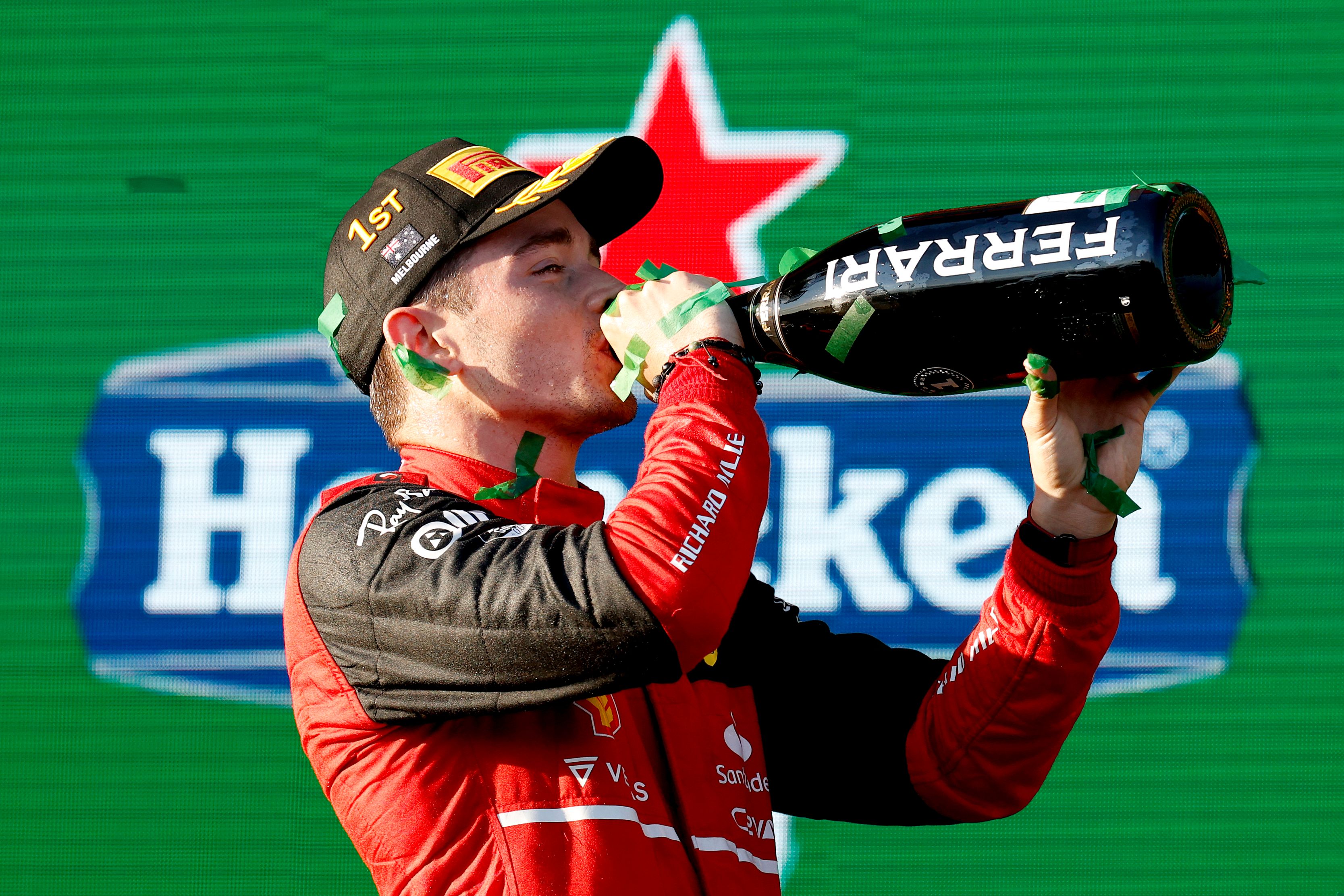Pristine poise of Charles Leclerc provides championship platform amid F1 chaos
The Monegasque took another superb victory for Ferrari at the Australian Grand Prix on Sunday

Your support helps us to tell the story
From reproductive rights to climate change to Big Tech, The Independent is on the ground when the story is developing. Whether it's investigating the financials of Elon Musk's pro-Trump PAC or producing our latest documentary, 'The A Word', which shines a light on the American women fighting for reproductive rights, we know how important it is to parse out the facts from the messaging.
At such a critical moment in US history, we need reporters on the ground. Your donation allows us to keep sending journalists to speak to both sides of the story.
The Independent is trusted by Americans across the entire political spectrum. And unlike many other quality news outlets, we choose not to lock Americans out of our reporting and analysis with paywalls. We believe quality journalism should be available to everyone, paid for by those who can afford it.
Your support makes all the difference.The 2022 Formula 1 season was supposed to bring with it a new era of unpredictability. In plenty of ways, it has.
The biggest regulation change the sport has undergone in a generation has changed things forever, dramatically altering the ways cars race one another, shaking up the establishing running order, rendering old masters also-rans, and characters who were previously mere extras into show stopping leads.
Mercedes – the winners of eight consecutive constructors titles in a row – are unable to challenge for race victories, with Lewis Hamilton looking less and less likely to win an eighth world championship every time he steps inside his heavy, bouncing silver car. Their old rivals Red Bull have built a car which, while quick, on the evidence so far is also an unreliable mess. Current champion Max Verstappen is furious and languishing down the order.
Haas and Alfa Romeo are no longer backmarkers approaching the end of their time in F1, instead capable of challenging for strong points in the midfield. And Ferrari, after enduring two of the most chastening seasons in its seven-decade history in the sport, are winners once again.
The racing in the first three rounds of the season has been ceaseless and breathless, with drivers unable to take progress through the field for granted anymore. Once an overtake is done, ground effect aerodynamics mean the man who has dropped down a place is able to stake a claim to take his position back once again almost instantly.
Formula 1 will be delighted with the entertainment value its new-age form of structured chaos is providing fans and sponsors, as it looks to take advantage of its booming popularity among young people around the world.
How strange, then, that this brave new world is being so overwhelmingly defined by one far less anarchic constant thus far – the pristine poise of Charles Leclerc’s driving.
Whenever the replays of a crash, or a spin, or a pass have been exhausted, the Formula 1 cameras pull back to the same series of shots of one man: Charles Leclerc.
Charles Leclerc – hitting his apexes, managing his tyres, and bringing the car home in one piece. Charles Leclerc – putting in quick laps, riding the kerbs, and picking his moments. Charles Leclerc – taking pole positions, winning races, and dominating the championship.

At the first Australian Grand Prix in three years in Melbourne on Sunday morning, the 24-year-old delivered an F1 “grand slam” by qualifying on pole, leading every lap, winning the race, and securing the fastest lap. This was a performance in which he was rarely challenged from behind but where the serenity of both his driving style and personality perfectly exemplified why he is the solid stone statue standing firm in the middle of Formula 1’s storm right now.
Facing a two-pronged threat from the Red Bulls at the start, with teammate Carlos Sainz toiling in ninth after a disastrous qualifying session, Leclerc headed both off into Turn 1 by managing his launch well and forcing his rivals onto the same portion of tarmac on the left-hand side. There were two safety car restarts, and for a moment the second caused Leclerc trouble, the car sliding at the final corner as he struggled to find the traction point.
Verstappen’s eyes no doubt lit up beneath his visor but Leclerc found enough pace on the straight and through the following corners to not only maintain the advantage, but to pull away from Verstappen and build up an insurmountable lead.
Once the Dutchman had retired with a second mechanical failure in three races, Leclerc finished ahead of Sergio Perez in the second Red Bull by over 20 seconds. Had neither safety car period occurred the 24-year-old could well have taken victory by around a minute, such was his supremacy.
The Ferrari machinery Leclerc is jockeying is an enormous factor in his early season success, of course. And with 20 races still remaining there is the possibility that others can take the lead in the championship by outperforming him, or that the pressure of challenging for the title for the first time since joining F1 in 2018 could tell at some stage.
For now though, while others complain about their cars, drop out of races, and try with all their might to adjust to Formula 1’s new dawn, Leclerc is unflappable. He is taking all of the upheaval in his stride, joshing over the team radio, and picking up the points.
If he can maintain the sensational level of form he has produced so far this season in the long run, then his stellar air of insouciance may just define Formula 1 for the foreseeable future.




Join our commenting forum
Join thought-provoking conversations, follow other Independent readers and see their replies
Comments